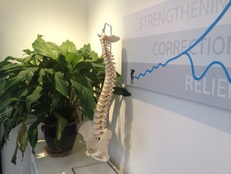
With our busy lifestyles I know it is not possible to be able to head out into nature regularly. In fact, a lot of people actually spend the majority of their time inside. The paint and synthetic materials in buildings can actually off-gas noxious chemicals which can lead to asthma, allergies etc. This has been referred to as “Sick building syndrome”.
It is possible to bring some nature into your home and office though. One way of doing this is with plants. Anyone who knows me, knows that I like to research things and choosing the right plants for my office was no different. During my search I came across some interesting research from NASA. NASA did a study to find which plants would be best to purify the air in a closed environment. We know that plants are important for turning carbon dioxide into oxygen, but interestingly, some plants are able to absorb hazardous chemicals (benzene, formaldehyde and/or trichloroethylene) from the air. Continue reading to see what plants made the list.
Some plants are better than others in purifying the air. For me some plants are also better looking. When I was choosing the plants for my office, my main considerations were, how the plant looked, how they would fit in the space I had and the ease of looking after them. I had made a selection of options before I found the NASA study. Luckily, some of the ones that I chose were already on the list. I will briefly look at the ones I have chosen. The rest of the plants identified in the experiment are listed below.
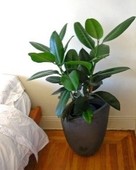
Rubber Tree (Ficus elastic)
One plant I was looking for was a taller plant to sit next to my water purifier. The Rubber tree fits this bill well. Rubber trees are good for cleaning the air and are one of the easiest plants to grow, as they thrive even in dim lighting and cooler climates. Rubber trees are a powerful toxin eliminator and air purifier.
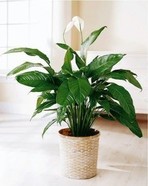
Peace lily (Spathiphyllum 'Mauna Loa')
I have had a Peace Lily in the office for a while. Mine is around 6 years old and quite large, but looks nice in the space. They are low-maintenance and easy to look after. Peace lilies do well in shade and cooler temperatures, and they can reduce the levels of a number of toxins in the air.
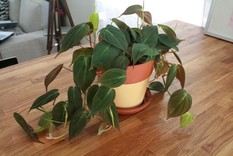
The final plant I was looking for was one that I could grow over the side of a cupboard. The heart-shaped philodendron is a popular plant choice for indoor areas, as they're easy to care for and can grow decorative vines. They are particularly good at absorbing formaldehyde. They can also last for many years when properly cared for.
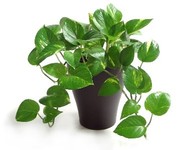
Golden Pothos or Devils Ivy (Scindapsus aures or Epipremnum aureum)
This was another option as a hanging type plant. Ivy’s are great at purifying and removing formaldehyde from the air. This was the plant I chose for my office.
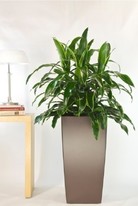
Dracaena “Janet Craig”
This is also a good option if I wanted something different than the Rubber Tree. This plant is one of the most effective at removing trichloroethylene from the air, which is a chemical commonly emitted by photocopiers and similar devices. There were several Dracaena’s on the list.
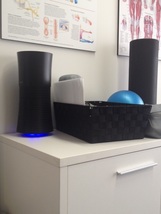
- The rest of the list from NASA
- Bamboo Palm (Chamaedorea sefritzii)
- Chinese evergreen (Aglaonema modestum)
- Gerbera Daisy (Gerbera Jamesonii)
- Red-edged Draenea or Marginata (Dracaenea Marginata)
- Cornstalk Draeanea (Dracaena fragans 'Massangeana')
- Snake Plant / Mother-in-laws tongue (Sansevieria trifasciata'Laurentii')
- Pot Mum or Florist’s chrysanthemum (Chrysantheium morifolium)
- Warneck Dracaenea (Dracaena deremensis 'Warneckii')
Electrical air purifiers
If you want to go the extra strep for cleaning the air in your home or office, you can buy air purifiers. I have one in my practice from Oregon Scientific. That’s it in the picture with the blue light. It looks nice and also does a good job. They are not cheap, but are very useful. There are other brands around. If you are interested in one, you should be able to find a few different options,
I am exposed to people with varying degrees of coughs and splutters all day, especially in winter. With my new plants and my air purifier, I wanted to make the practice environment look great, but also be the healthiest place I could.
Plants look nice, they can be effective at removing hazardous chemicals from the air, they can help regulate humidity and they can also help reduce your stress levels. If you are looking for plants to make your home or office look better but also a healthier place, hopefully this post will point you in the right direction.
References
- http://www.ncbi.nlm.nih.gov/pubmed/18329704
- http://www.aarp.org/politics-society/advocacy/info-07-2012/health-benefits-of-nature.html
- http://www.huffingtonpost.com/2015/07/29/best-houseplants-destress_n_2964013.html
- http://www.mnn.com/health/healthy-spaces/stories/top-10-air-purifying-houseplants
- http://ntrs.nasa.gov/archive/nasa/casi.ntrs.nasa.gov/19930073077.pdf
- For some more information on some of these plants and others (20 in total), here is a useful link: https://www.ronneal.com/indoor-air-purifying-plants.php



 RSS Feed
RSS Feed


